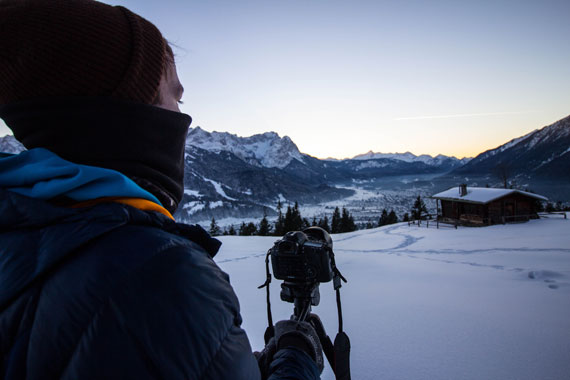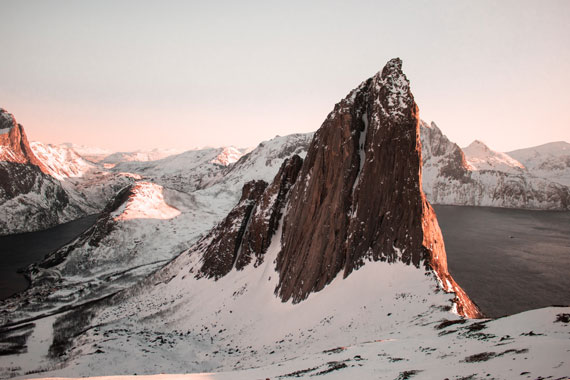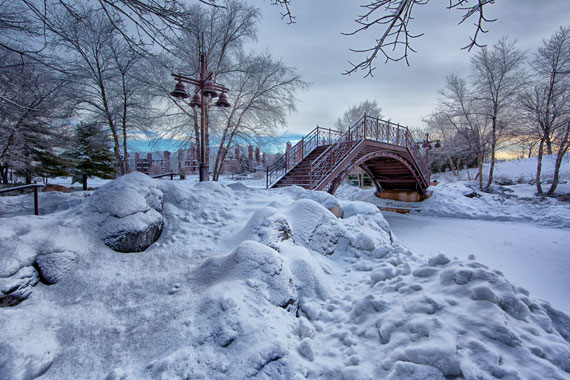Are you ready to capture stunning winter wonderland scenes with your camera? Whether you’re a seasoned pro or a beginner photographer, snow photography can be a fun and rewarding way to express your creativity. With a little bit of planning and the right camera settings, you can capture breathtaking images of snow-covered landscapes, frosty trees, and sparkling snowflakes. In this tutorial, we’ll show you how to master the art of snow photography, from choosing the right equipment to getting the perfect shot.

Photo captured by Lucas Allman
Here are some tips for photographing snow:
Focus on contrast: Snow can be bright and featureless, so try to find subjects that provide contrast and interest. Look for dark trees, colorful hats or scarves, or other elements that will stand out against the snow.
Try exposure compensation: exposure compensation is a way to adjust the exposure of a photograph by telling the camera to make the image lighter or darker. When you photograph a scene that is predominantly white, like snow, the camera’s meter may be tricked into thinking the scene is brighter than it actually is. This can cause the camera to underexpose the image, resulting in a photograph that is too dark. Try using an exposure compensation of +1 or +2 to start.
Use aperture priority: Aperture priority is a shooting mode that allows you to control the aperture (f-stop) while the camera chooses the appropriate shutter speed. This can be useful when photographing snow because you can choose a small aperture (higher f/stop number) to not allow as much light into the sensor and adjust the depth of field to keep both the foreground and background in focus.
Try setting your white balance manually: Snow appears blue in photographs because it reflects blue light. This can cause the photograph to look cool and unbalanced if the white balance is not set correctly. To correct for this, you can set your white balance to “cloudy” or use a custom white balance. This will warm up the photograph and give it a more natural appearance.

Photo captured by Tobias Bjorkli
Protect your gear: Snow and cold temperatures can be tough on camera equipment. Make sure to keep your gear protected from the elements by using a weather-sealed camera and lens, and consider using a rain cover or umbrella to keep your gear dry.
Handle condensation: If you go from a cold outdoor environment to a warm indoor environment, your camera and lens may become covered in condensation. To prevent this, put your camera in a sealed bag before bringing it inside, and let it gradually warm up to room temperature before taking it out of the bag.
Try a polarizing filter: A polarizing filter is a type of lens filter that helps reduce glare and increase contrast by filtering out certain wavelengths of light. When you photograph snow, a polarizing filter can help reduce the glare from the sun and increase the contrast between the bright snow and the darker elements in the scene. This can help make the photograph more visually appealing and bring out the details in the scene.
Try a lens hood: A lens hood is a piece of equipment that attaches to the front of a lens and helps to reduce lens flare and improve contrast. When you photograph snow, the bright light reflecting off the snow can cause lens flare, which is a type of glare that appears as a series of bright streaks or circles in the photograph. Lens flare can be caused by light entering the lens from an angle, and it can reduce the contrast and overall quality of the photograph. A lens hood can also help to protect the front element of your lens from snow, moisture, and other elements. This can be especially useful when you are photographing in cold, wet conditions.
Get close to your subject: Snow scenes can often appear flat, so getting close to your subject can add depth and interest to your photograph. By getting close to your subject, you can create a sense of intimacy and bring out the details in the scene.

Photo captured by Adriaan Greyling
Experiment with different compositions: Photography is all about experimentation and trying different things. When you photograph snow, try shooting from different angles and perspectives, and play with the placement of elements in the frame. This will help you find a composition that works best for the scene you are photographing and create more visually interesting photographs.
We hope these tips have helped you capture beautiful photographs of snow! Remember to have fun and experiment with different camera settings and compositions to find what works best for you. Whether you’re capturing sweeping landscapes or close-up shots of frosty trees, snow photography is a great way to celebrate the beauty of winter. So bundle up, grab your camera, and head out into the snowy wonderland – you never know what amazing shots you might capture!
- - - - - - - - - - - - - - - - - - - - - - - - - - - - - - - - - - - - - - - - - - - - - - - - - - - - - - - - - - - - - - - - - - - - - - - - - -
The post How to Photograph Snow appeared first on PictureCorrect.
from PictureCorrect https://ift.tt/tlbWo0r
via IFTTT






0 kommenttia:
Lähetä kommentti